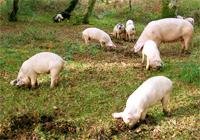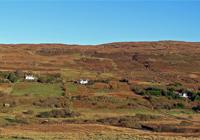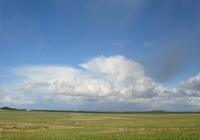Common grazings-related work in the United Kingdom
Common grazing land accounts for about 7% of the UK’s agricultural area, but a much higher proportion of High Nature Value farmland. For example, in England, it makes up 56% of all semi-natural rough grazings.
| England | N Ireland | Scotland | Wales | UK | |
|---|---|---|---|---|---|
| Common land | 555,719 | 35,513 | 594,440 | 180,305 | 1,238,147 |
| Sole use rough grazings | 427,889 | 146,517 | 3,401,694 | 209,503 | 4,313,433 |
| Total Agri. land | 9,223,449 | 1,029,043 | 5,837,450 | 1,556,910 | 17,646,852 |

England’s New Forest.
© Jim Champion
Farmers with common grazing rights come under a number of different legal frameworks in different parts of the UK, notably crofters’ common grazings legislation in Scotland and the law of common land in England and Wales, but significant minorities of graziers do not fall into these categories, frequently facing even greater marginalisation during policy design and implementation.
Legal complications and the difficulties of dealing with fellow graziers have always posed greater challenges for common grazing farmers than would be faced by similar sole use hill farms. The introduction of both decoupled CAP area payments and more complicated instruments such as agri-environment has added considerably to these difficulties.

Skye, are not covered by laws to
regulate crofters’ common
grazings in Scotland, creating
difficulties for active graziers
© Richard Dorrell
English common land was well documented in 2009 in a report for Natural England, Trends in Pastoral Commoning but there is no work highlighting the state of Scotland’s common grazings or of how they are coping with current policy, let alone how they might be affected by policy changes in the future. We are working on a report to address this. Some preliminary results were presented in a poster presented at the Sibiu conference.
One possible threat to active common graziers is a move away from historic to regionalised delivery of the Single Farm Payment. On a sole use farm, both regional and historic claimants need to comply with Good Agricultural and Environmental Condition rules, carrying out such activity as meeting those standards implies. On common land historic payments maintain a tenuous but nevertheless real connection between payments and those most likely to be active at present; regionalised payments allow inactive rights holders to claim CAP direct payments while not needing to undertake any of the work needed to deliver GAEC.

Scotland, was appropriated by
Government during World War II,
but apart from the land still used
for the local airport it is still used
as common grazings. Graziers
were not able to access agri-
environment payments directly.
© Mike Shields
England is already implementing a transition to a regionalised SFP model. The Countryside and Community Research Unit, along with the Foundation for Common Land, is carrying out research commissioned by EFNCP to investigate what impacts, if any, can be detected on active graziers (Final report; 1.833 KB).
The third element in this element of the 2010 programme aimed to lessen the sense of isolation and marginalisation in common graziers in the UK and to allow them to experience different approaches to common land through meeting fellow graziers and visiting various projects in northern Spain. A report of the study tour is available.
- Paper presented at the International Association for the Study of the Commons conference, Plovdiv, September 2011
- Powerpoint presentation presented at the International Association for the Study of the Commons conference, Plovdiv, September 2011 (.pptx)
- Poster: Common grazings – more disadvantage for HNV farmland in the new CAP?
- Trends in Common Grazing – first steps towards an integrated needs-based strategy



